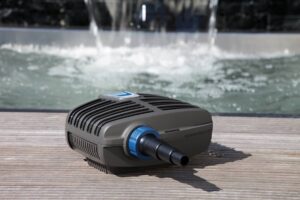Do Ponds Really Need Pumps?

I used to stare at my pond and think, “Oh, do I really need a pump?” Often, it felt like one of those optional add-ons, nice, but not urgent. Then the water got cloudy, the fish got moody, and the whole vibe went downhill. That is when it hit me: circulation is not a luxury. It is important.
Why Pumps Matter More Than You Think
In the early days, I did not realise how much work a pump quietly handles. On websites featuring Oase Pond pumps, especially That Pond Guy site, it is pretty clear they are not just selling gadgets; they are pushing reliability. That Pond Guy often highlights how Oase engineering delivers both efficiency and durability. And honestly, they have seen way more pond disasters than most of us, so when they insist circulation is key, well, I listened.
A pump stops your pond from becoming a still, lazy puddle. It moves the water, feeds the filter, oxygenates everything, and basically keeps the whole ecosystem from collapsing into murk.
What a Pump Actually Does
Let me put it in my own slightly messy words:
- Water at the bottom? It gets stale fast.
- Filters cannot do a thing without water passing through.
- Stagnant patches, algae love them.
- Fish need oxygen, and pumps help deliver it.
That gentle, constant movement might look small, but it keeps the pond’s “life-support system” running.
A few not-so-perfect lessons from messing around with pumps:
1. Pump Size Is Not a Guessing Game
If your pond holds 2,000 litres, don’t pick a pump that barely tickles the surface.
A common guideline:
- Circulate the entire pond every 1–2 hours
- Bigger ponds mean stronger pumps
- Waterfalls or fountains? You will need more pressure.

2. Features Change Everything
A pump for a calm pond is one thing. A pump for a pond with a waterfall, fountain, and a bunch of twists in the pipework? That is a different beast.
Key points:
- Extra height requires extra power
- Longer pipe runs with more resistance
- Weak pumps create slow, sad dribbles instead of waterfalls
3. Efficiency Matters Long-Term
Some pumps eat electricity like teenagers raiding a fridge. Oase pond pumps, which That Pond Guy stocks, focus on energy efficiency, something you start appreciating once the monthly bill comes in.
Things to watch:
- Keep debris away from the intake
- Check for clogs
- Clean the sponge or filter cage before it suffocates the flow.
4. Wildlife Ponds Are Different
If you are making a purely wildlife-centric pond, you might sort of get away without a pump. But even then, a bit of movement can prevent cloudy, sad-looking water.
Wildlife ponds can survive without pumps, but they tend to thrive with them. So, do You Actually Need a Pump? Technically, maybe not, but practically yes.
If you want clear water, happy fish, balanced plants, and an ecosystem that does not exhaust you, installing a pump is one of the smartest decisions you will make. And if you are hunting for something sturdy and trustworthy, brands like Oase, especially through specialists such as That Pond Guy, are excellent picks.






